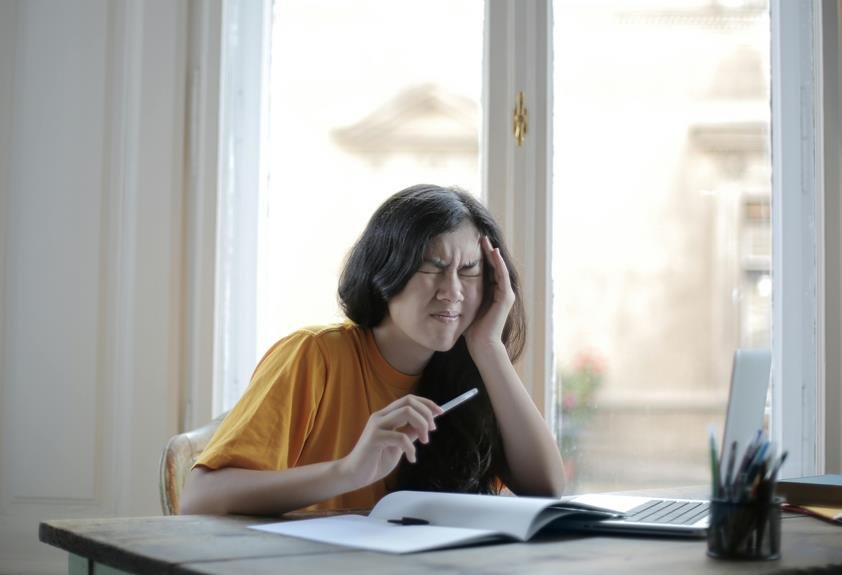The Link Between Aging and Back Pain: What You Need to Know
Imagine your spine as a well-oiled machine that has served you faithfully for decades. Now, picture the wear and tear that time can inflict upon even the most well-maintained machinery.
Just like a machine, as you age, your spine undergoes changes that can lead to discomfort and pain. But what exactly happens as we grow older that makes back pain a common companion?
Understanding the intricate relationship between aging and back pain is crucial for maintaining your quality of life and mobility in the long run.
Common Causes of Back Pain
When it comes to understanding back pain, identifying the common causes is essential for effective treatment. One prevalent cause of back pain is muscle strain or sprain, often resulting from improper lifting techniques or sudden movements. Poor posture, such as slouching while sitting or standing, can also lead to back pain over time.
Another common culprit is disc degeneration, where the spinal discs wear down with age, causing discomfort and reduced mobility. Injuries from accidents or falls can cause acute back pain, requiring immediate attention. Additionally, conditions like arthritis can affect the spine, leading to chronic pain and stiffness.
Obesity is another factor that can put strain on the back, exacerbating pain. Stress and lack of physical activity can also contribute to back pain, affecting both the muscles and overall well-being. By recognizing these common causes, you can take proactive steps to prevent and manage back pain effectively.
Effects of Aging on Spine
As you age, your spinal discs may naturally degenerate, leading to decreased cushioning between vertebrae.
Additionally, you might experience a loss of bone density in your spine, making it more susceptible to fractures and compression.
These effects of aging on your spine can contribute to increased back pain and discomfort over time.
Spinal Disc Degeneration
Spinal disc degeneration, a common consequence of aging, can lead to significant back pain and mobility issues. As you age, the discs in your spine lose water content and elasticity, making them less effective as shock absorbers. This degeneration can result in decreased flexibility, stiffness, and discomfort in the back.
Over time, the outer layer of the discs may weaken, causing them to bulge or herniate, putting pressure on nearby nerves and causing pain that radiates down the legs. Additionally, as the discs degenerate, the space between the vertebrae decreases, leading to reduced spinal flexibility and potentially contributing to conditions like spinal stenosis.
Maintaining a healthy weight, staying active, and practicing good posture can help mitigate the effects of spinal disc degeneration.
Loss of Bone Density
Aging not only affects spinal disc degeneration but also leads to a loss of bone density in the spine, impacting your overall back health and increasing the risk of fractures.
As you age, your bones naturally become less dense and more brittle, making them susceptible to fractures, especially in the vertebrae of the spine. This loss of bone density, known as osteoporosis, can weaken the vertebrae, leading to compression fractures and other spinal issues.
It's essential to maintain a healthy lifestyle, including regular weight-bearing exercise, adequate calcium and vitamin D intake, and avoiding smoking and excessive alcohol consumption, to help preserve bone density and reduce the risk of fractures as you age.
Degenerative Disc Disease
One common cause of back pain that frequently affects individuals as they get older is the condition known as degenerative disc disease. This condition occurs when the discs between the vertebrae in the spine deteriorate and lose their cushioning ability over time. As a result, the bones in the spine may begin to rub against each other, leading to pain, stiffness, and reduced flexibility in the back.
Degenerative disc disease can be a source of chronic discomfort, impacting your daily activities and overall quality of life. The pain from this condition may worsen with movement, sitting for long periods, or bending and lifting heavy objects. Additionally, degenerative disc disease can sometimes cause radiating pain or numbness that travels down the arms or legs, depending on where the affected discs are located in the spine.
To manage degenerative disc disease, it's important to maintain a healthy weight, practice good posture, and engage in regular low-impact exercises that strengthen the muscles supporting the spine. In some cases, physical therapy, pain medications, or injections may be recommended to alleviate symptoms and improve function.
Osteoarthritis and Back Pain
When it comes to osteoarthritis and back pain, understanding the symptoms is crucial.
You'll also need effective management strategies to alleviate the discomfort.
Let's explore these key points further in the following sections.
Osteoarthritis Symptoms Overview
Osteoarthritis symptoms can manifest in various ways, contributing to back pain experienced by many individuals. Common symptoms of osteoarthritis include joint stiffness, swelling, and tenderness. As this condition progresses, the cartilage that cushions the joints wears down, leading to bone-on-bone contact, which can result in pain, discomfort, and reduced mobility in the affected area.
In the case of osteoarthritis in the spine, individuals may experience back pain that worsens with movement and improves with rest. Additionally, osteoarthritis can cause the formation of bone spurs, further exacerbating pain and limiting flexibility. Understanding these symptoms is crucial in managing osteoarthritis-related back pain effectively.
Back Pain Management Strategies
To effectively manage back pain associated with osteoarthritis, incorporating a combination of targeted exercises and regular physical therapy sessions can significantly improve mobility and reduce discomfort.
Engaging in low-impact activities such as swimming or walking can help strengthen the muscles supporting your spine while minimizing stress on your joints. Additionally, practicing good posture and body mechanics in daily activities is crucial for preventing further strain on your back.
Over-the-counter pain medications like acetaminophen or nonsteroidal anti-inflammatory drugs (NSAIDs) can provide temporary relief, but it's essential to consult with a healthcare professional before starting any medication regimen.
In more severe cases, epidural steroid injections or surgical interventions may be recommended to alleviate persistent pain and improve function.
Tips for Back Pain Prevention
To prevent back pain, incorporating regular exercise into your daily routine is essential for maintaining a strong and healthy spine. Focus on activities that strengthen the core muscles, such as planks, bridges, and bird dogs, as these help support your back and improve posture. Additionally, stretching exercises like yoga or Pilates can enhance flexibility and reduce the risk of muscle strain.
Maintaining a healthy weight is also crucial in preventing back pain. Excess weight puts added stress on your spine, so eating a balanced diet and staying within a healthy weight range can alleviate this pressure. Remember to stay hydrated by drinking an adequate amount of water each day to keep your spinal discs hydrated and functioning properly.
Practicing good posture throughout the day is another key aspect of back pain prevention. Whether sitting at a desk, standing, or lifting objects, make a conscious effort to maintain a neutral spine position. Avoid slouching or hunching over, as this can strain your back muscles and lead to discomfort. By incorporating these tips into your daily routine, you can proactively reduce the risk of experiencing back pain as you age.
Treatment Options for Back Pain
Consider exploring various treatment options for back pain that can provide relief and improve your quality of life. When dealing with back pain, over-the-counter pain medications like ibuprofen or acetaminophen can help alleviate discomfort. Additionally, applying ice or heat packs to the affected area may reduce inflammation and soothe muscle tension.
Physical therapy is another effective treatment option for back pain. A trained therapist can guide you through exercises to strengthen your back muscles, improve flexibility, and correct posture issues that may be contributing to your pain. In more severe cases, cortisone injections or nerve blocks may be recommended to manage pain and reduce inflammation.
Chiropractic care and acupuncture are alternative therapies that have shown promising results in relieving back pain for some individuals. Chiropractors can perform spinal adjustments to realign the spine, while acupuncturists use thin needles to target specific points along the body's energy pathways.
Surgery is typically considered a last resort for chronic back pain that doesn't respond to other treatments. It's essential to consult with a healthcare professional to determine the most suitable treatment plan for your specific condition.
Frequently Asked Questions
Can Back Pain Be a Sign of a More Serious Underlying Health Condition in Older Adults?
Back pain in older adults can indicate a more serious underlying health issue. It's crucial to consult a healthcare provider for proper evaluation and diagnosis. Early detection can lead to effective treatment and improved quality of life.
How Does the Aging Process Specifically Contribute to the Development of Back Pain?
Ever wondered how aging impacts your back? As you grow older, spinal discs lose moisture and elasticity, leading to degeneration. Muscle strength decreases, affecting support for your spine. Wear and tear accumulate, heightening back pain risks.
Are There Any Specific Dietary or Lifestyle Changes That Can Help Alleviate Back Pain in Older Individuals?
To alleviate back pain as you age, consider dietary adjustments like increasing anti-inflammatory foods and staying hydrated. Incorporate regular low-impact exercises, maintain good posture, and prioritize proper ergonomics. Enhancing core strength through exercises can also help support your back.
What Role Does Exercise Play in Managing Back Pain in the Elderly Population?
Exercise plays a crucial role in managing back pain as you age. By strengthening core muscles, improving flexibility, and promoting better posture, regular exercise can help alleviate discomfort and enhance overall spinal health.
Are There Any Alternative or Complementary Therapies That Can Be Effective in Treating Back Pain in Older Adults?
When dealing with back pain as you age, consider alternative therapies like acupuncture, chiropractic care, or yoga. These methods can complement traditional treatments and provide relief. Consult with your healthcare provider to explore your options.
Conclusion
So, next time you feel that nagging ache in your back, remember that aging can play a big role in causing it.
As the years go by, our spines may wear down like a well-loved book, with pages frayed and covers worn.
But don't despair! By taking care of your spine and following the tips and treatment options mentioned, you can write a new chapter with less pain and more mobility.






